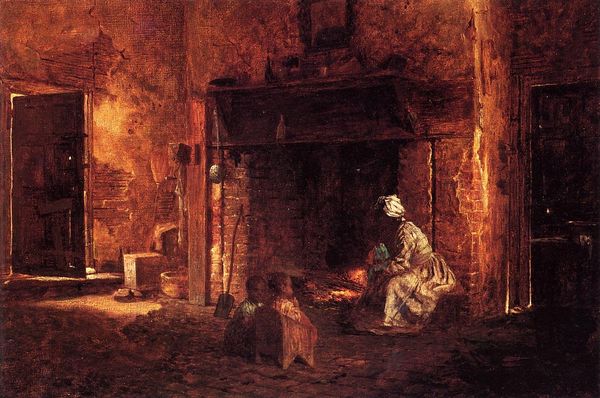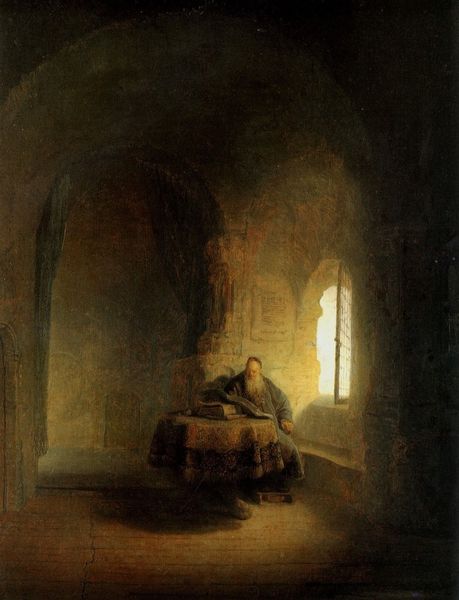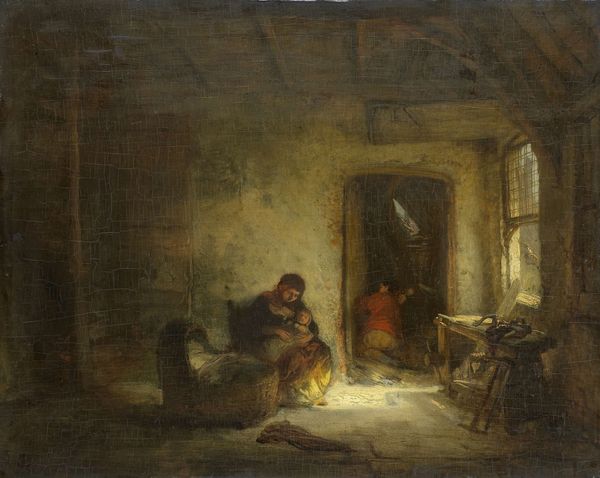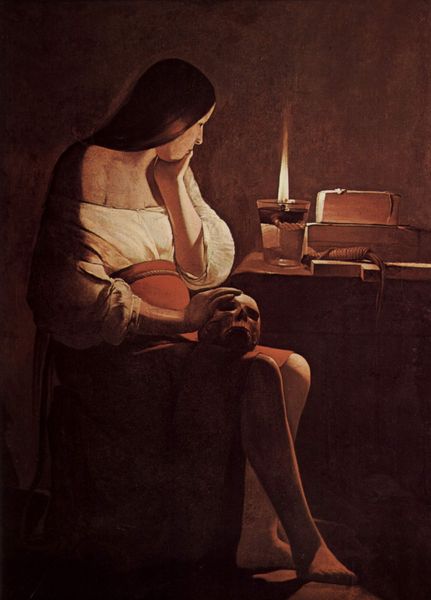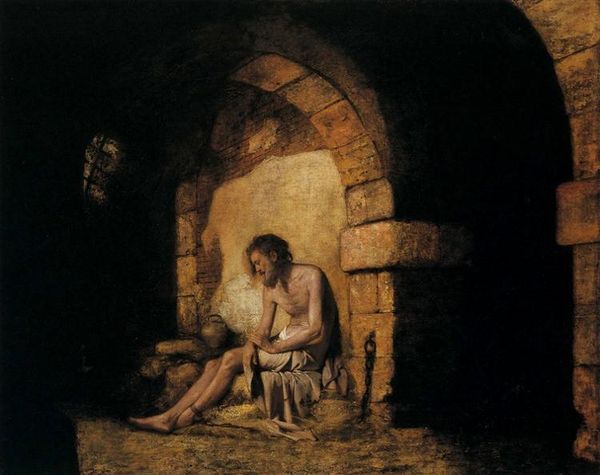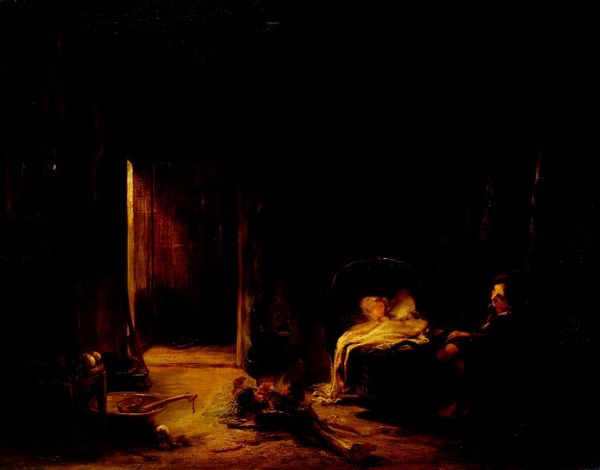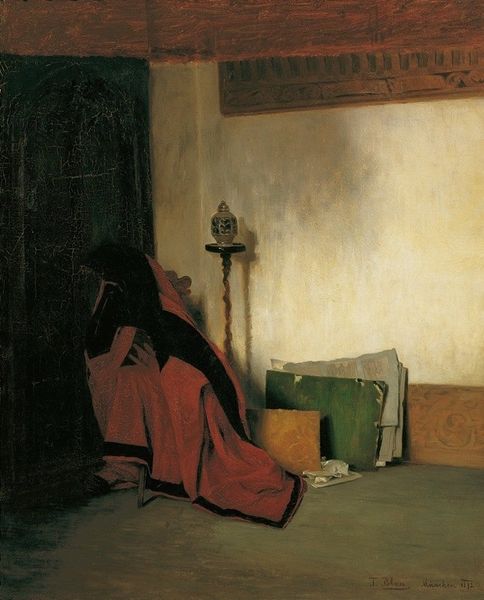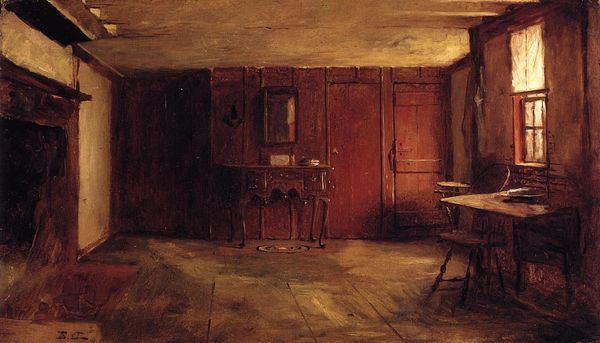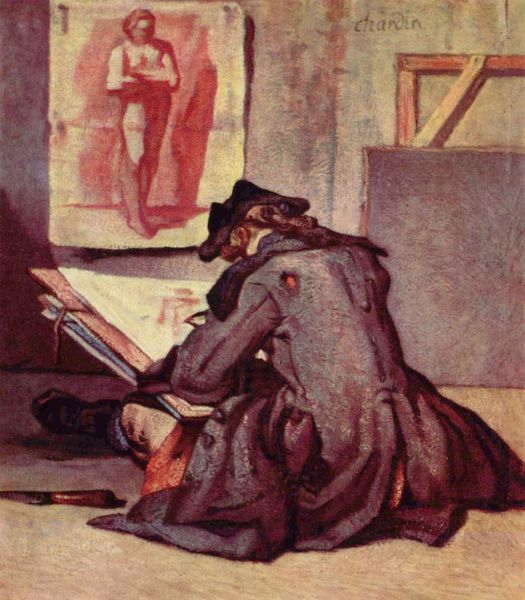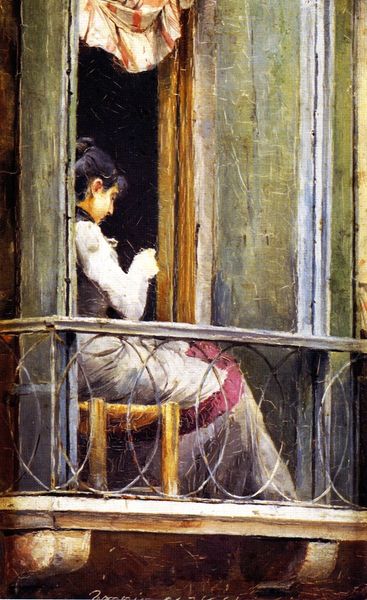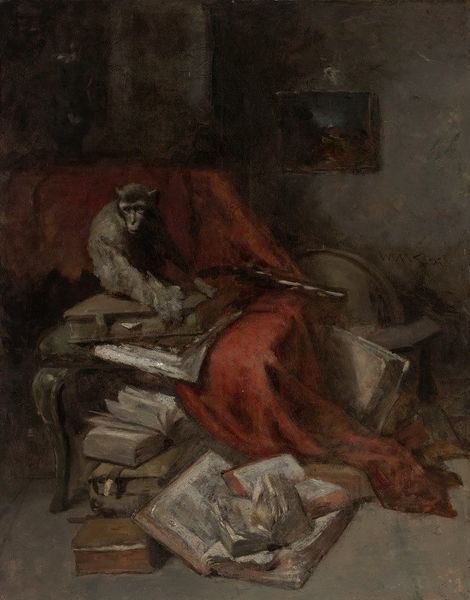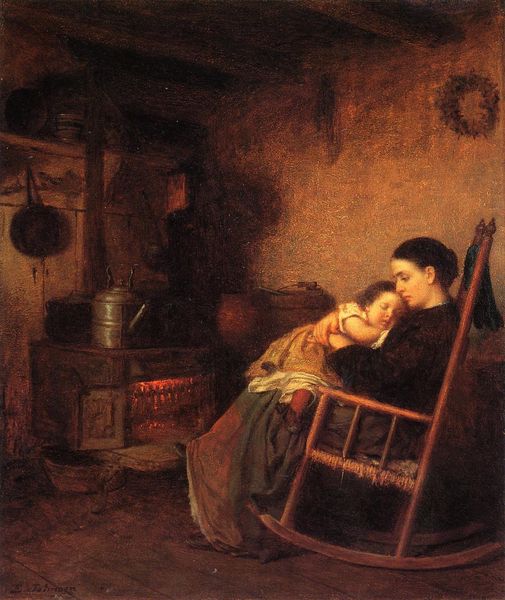
painting, oil-paint
#
portrait
#
painting
#
oil-paint
#
oil painting
#
genre-painting
#
modernism
#
realism
Copyright: Balthus,Fair Use
Curator: What an intriguing composition. Balthus's 1955 oil painting, "Chassy by the fireplace at workshop," presents us with a rather subdued scene. What strikes you immediately? Editor: The somber atmosphere, definitely. There’s a feeling of quiet labor in the artist’s studio, made clear by the materiality present. A palpable stillness emanating from the rough-hewn materials: the bare floorboards, the utilitarian table, the darkness of the unlit hearth. Curator: Absolutely, and that feeling extends to the young woman. I think we can’t separate the context surrounding Balthus' work—particularly his portrayals of young women—from larger debates around power, representation, and the male gaze. There's a passivity, or perhaps more accurately, a quiet resilience. Editor: I see her almost as an object within this studio space, her posture reflecting the physical labor that goes into art making: the raw physicality needed to produce. Curator: An interesting observation. Consider also the historical context. 1955 was a moment of great transition in art. It's a pre-feminist art world where such observations weren't readily part of mainstream critical discussions. Balthus, though, seems deliberately to position this young girl—Chassy—within the artistic space as an observer or muse, in silent discourse with the artist’s world. Editor: Agreed. But observe how Balthus uses materials, light and shadow. The impasto creates a roughness, aligning with labor's textures. Even the subtle contrast with the smoother surfaces in the composition tells a tale of effort and production inherent in any studio practice. Curator: Yes, the contrast is potent. The darkened hearth acts like a negative space, drawing attention to Chassy’s stillness. How this painting functions in today’s context as it’s now re-seen via discussions around sexuality and identity adds layers of meaning we are required to address. Editor: Indeed, those added layers are critical when assessing both process and place. Reflecting on it, I'm thinking anew about how a material-driven approach can help uncover layers in that contextual conversation. Curator: Precisely. Thinking through issues related to identity within this space sheds valuable light onto what could be termed, maybe controversially, female artistic labor of its own sort.
Comments
No comments
Be the first to comment and join the conversation on the ultimate creative platform.
